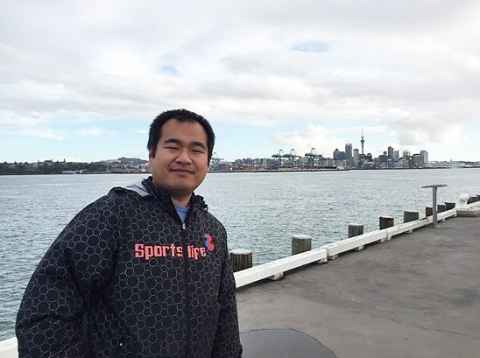Error correction in biometric recognition
Sean Ma is studying a PhD in Computer Science.

“My research project is looking at applying error correction codes to biometric recognition systems (that use data from irises, fingers, etc) to increase their acceptance rates. There are three parts to my research: error-correction, biological information recognition and cross-discipline application.
"Error correction is often realised using error correction codes. They are adopted widely in many fields, such as mobile communication, and can mitigate the negative impact of any noise. Introducing this technique to iris or finger recognition systems could improve the acceptance rates of these systems. I am mainly using a hardware device called Field Programmable Gate Array (FPGA) to correct errors.
“On a typical day I spend most of time in my research lab, simulating my programmes in computers and implementing designs into FPGA development kits to validate functions and measure performance. The thing I’ve enjoyed most during the project so far is the cause and effect link between software simulation and hardware implementation.
During my research, I’ve had light bulb moments, where I’ve created models and environments at a software-level and translated simulated programmes into FPGA-recognisable bitstreams. With countless programme debugging and changes, the idea becomes more concrete and ‘real’ on a circuit board. It made me realise that I have the capacity to surprise myself, however tiny or meaningless the idea appears to someone else. That’s something that keeps me motivated.
“Something that has been challenging for me is the feeling that the research is never-ending. Sometimes that are lots of problems and if I keep working on one issue at a time it can feel endless. Sometimes I think my research problem can’t be solved they way I expected it could be within the timeframe I have. When I feel like that, I focus on my research goals and carry on working. Then, when I look back to the first day I enrolled as a PhD student, I see how far I’ve come and the successes I’ve achieved.
“From time to time when I am stuck with a tricky research issue, I prefer to step away from it and do something completely different, like cooking a recipe I’ve never tried before for myself and my wife. It really helps me relax and makes me more resilient to facing challenges when I feel like I’m not making any research progress.
“There are two questions marks or problems I’ve encountered during my research project. One problem is that iris samples are difficult to find, as they are private information. I’ve had to work around this by finding alternative ways to find samples. One way is an open-source iris database, which I’ve applied to for access. The other question, which I’m still working on is whether I can find a class of perfect error-correction codes for biometric systems with the optimised acceptance rate improvement. This question may take me as long to answer as my PhD! Nevertheless, I still hope my research can deliver some practical cutting-edge ideas and applications to improve the quality of peoples’ lives.
“My research isn’t being done in a vacuum. I have been collaborating with people at Hong Kong Polytechnic University to implement an innovative joint-source-channel-coding system using FPGAs. I’ve gained more experiences of working with others remotely. In terms of the influence of this cooperation, this project may reveal another application field for my current research.
“If I could speak to my younger self, the one piece of advice I would give is don't stop doing tiny things, no matter how insignificant they might seem at the time. After a while, they accumulate and can make a massive contribution.”
Sean is supervised by Dr Bruce Sham and co-supervised by Associate Professor Jing Sun from the School of Computer Science.
We're always looking for stories to share from our passionate Science students.
If you have a story, we'd love to hear from you. Email science-web@auckland.ac.nz.